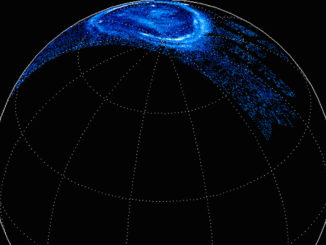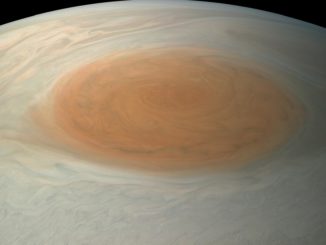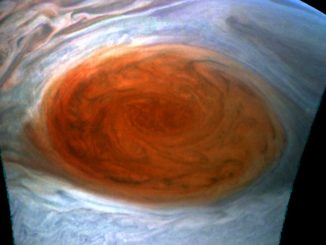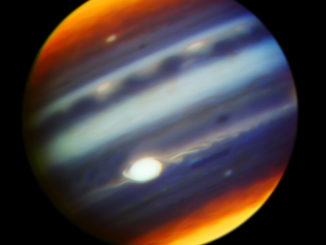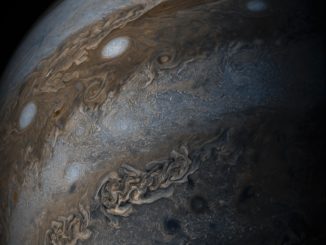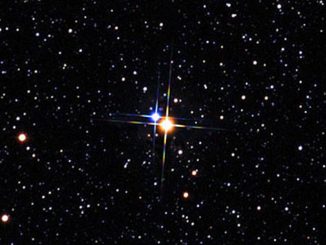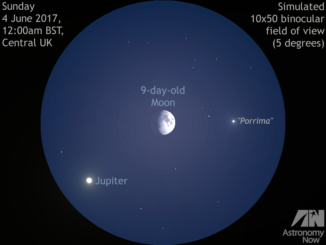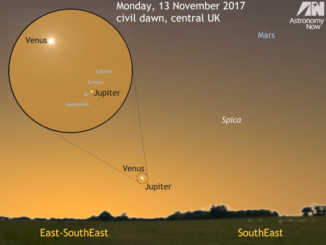
See Venus and Jupiter get close at dawn on 13 November
At the beginning of civil twilight on Monday, 13 November, observers in Western Europe and the British Isles should seek out a viewing location offering an unobstructed view very low to the southeast horizon to see brightest planet Venus and largest planet Jupiter separated by little more than half the width of a full Moon.


